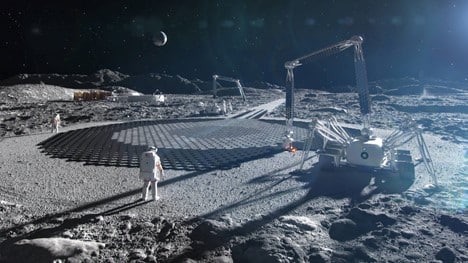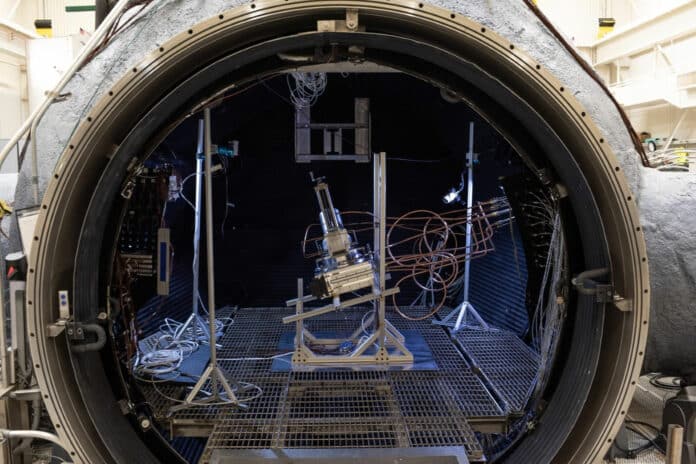NASA’s Artemis mission is to offer a long-term presence on the lunar surface. Building components like oxygen are essential for realizing that vision. In addition to using it for breathing, oxygen may also be a propellant for vehicles, allowing visitors to the Moon to stay there longer and travel further.
Recently, scientists at NASA’s Johnson Space Center in Houston successfully extracted oxygen from simulated lunar soil. For the first time, they extracted in a vacuum environment, paving the way for astronauts to one day extract and use resources in a lunar environment, called in-situ resource utilization.
The test was carried out by NASA’s Carbothermal Reduction Demonstration (CaRD) team in a special 15-foot-diameter spherical room known as the Dirty Thermal Vacuum room, simulating lunar conditions. The chamber is called “dirty” since it can test filthy samples.
The scientists melted the lunar soil simulant inside a carbothermal reactor created for NASA by Sierra Space Corp. of Broomfield, Colorado, using a powerful laser to simulate heat from a solar energy concentrator. The heating and oxygen extraction procedure is carried out in a carbothermal reactor. On Earth, carbothermal reduction has been utilized for many years to create materials like steel and solar panels by generating carbon monoxide or dioxide at high temperatures.

Once the soil heated, scientists detected carbon monoxide using the Mass Spectrometer Observing Lunar Operations (MSolo).
Aaron Paz, NASA senior engineer and CaRD project manager at Johnson, said, “This technology has the potential to produce several times its weight in oxygen per year on the lunar surface, enabling a sustained human presence and lunar economy.”
A carbothermal reactor must be able to maintain pressure to prevent gases from escaping to space while yet allowing lunar material to enter and exit the reaction zone if this method is to be used to produce oxygen on the Moon. The CaRD test’s reactor operation in a vacuum environment replicated lunar surface conditions. It raised the reactor’s technical readiness level to six, indicating that the technology has a fully functional prototype or representational model and is prepared for space testing.
Anastasia Ford, NASA engineer and CaRD test director at Johnson, said, “Our team proved the CaRD reactor would survive the lunar surface and successfully extract oxygen. This is a big step for developing the architecture to build sustainable human bases on other planets.”
